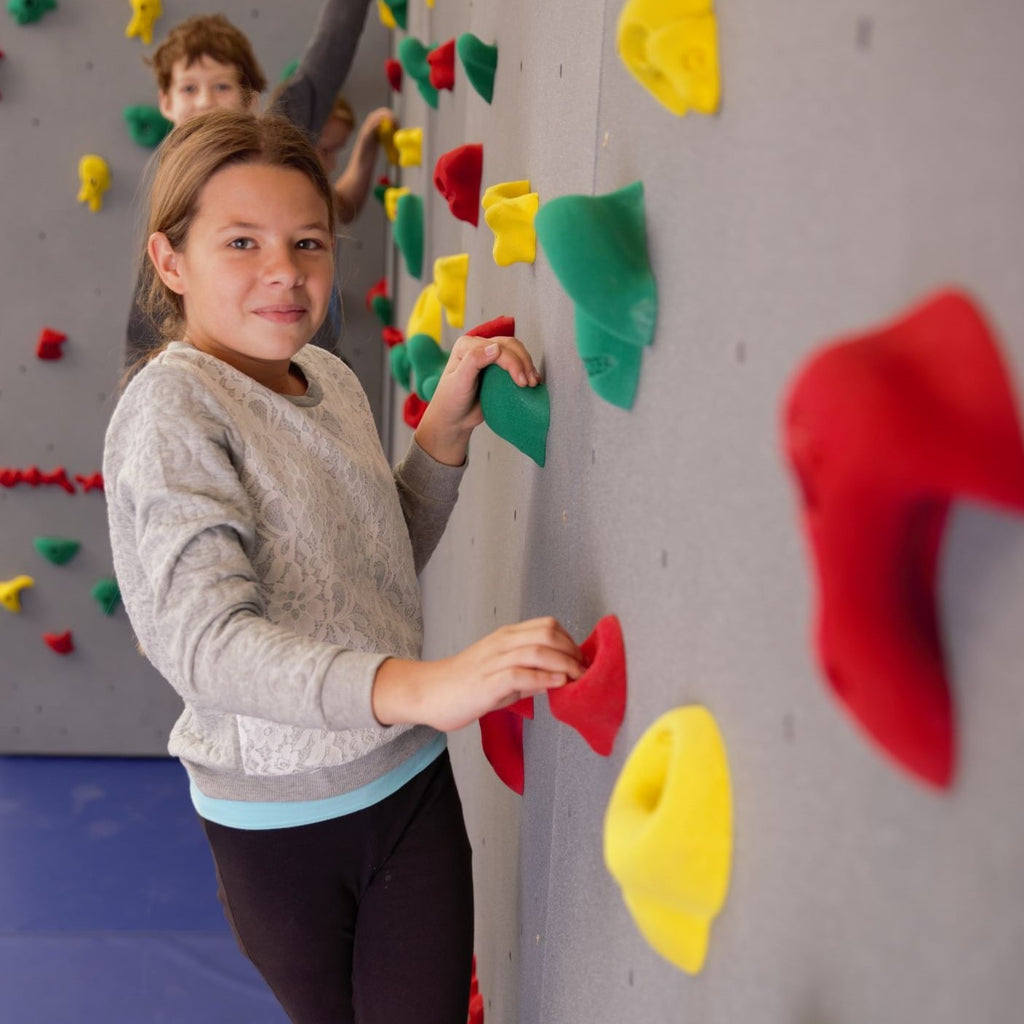
Tips for Engaging Climbers Ages 10 & Up on a Traverse Wall®
Keeping your climbers engaged over time takes planning. As those climbers get longer, stronger and more experienced, they need new challenges to keep the enthusiasm for climbing. Here are our tips for engaging the tweens and teens on your Traverse Wall®.
Provide Special Challenges
- Create a special challenge just for an upper grade level, for example just the 5th graders. Check out our Go Gecko Challenge that tasks climbers with completing a variety of climbing challenges that can be customized to whatever difficulty level is appropriate.
- Encourage your climbers to use the whole climbing wall and not just the upper portion. Often climbers, especially the taller ones, will aim high and predominantly use the upper portion of the climbing wall. Challenge them with: “How low can you go?” across the climbing wall, using the lowest of the holds. This will put climbers into new body positions in which they’ll need to problem solve to succeed. You can even put a tape line across the Traverse Wall and ask them to stay under it for the entire traverse.
- Challenge your older climbers to try some advanced climbing moves.
Add Accessories
Adding climbing accessories to your Traverse Wall brings novelty to the climbing experience introduces new challenges. Our Ultimate Challenge Course brings some Ninja-like challenges to the climbing wall. With the added challenge of climbing with rings and pegs, coordination, strength and problem solving are put to the test. Adding Volumes to your climbing wall instantly takes it to the next level and challenges climbers to use the holds on the Volumes which requires different hand maneuvers and increased grip strength.

Offer Challenging Activities
Activities that really challenge climbers are important to incorporate into your climbing program. Try these two activities with your oldest and most experienced climbers.
Front to Back Climb
Climbers rotate their bodies as they make their way across the climbing wall.
Grade Level: 4 and up
Grouping: Individual
Materials: None
Advance Set Up: None
Activity: Climbers begin climbing facing the wall. As they traverse across the wall, they carefully rotate so they are facing out. Then they turn again to face the wall and repeat “flipping” until the end of wall is reached.

Climbing in the Night
Participants climb the Traverse Wall while blindfolded.
Grade Level: 4 and up
Grouping: Partners
Materials: Blindfolds or bandannas, one per partnership
Advance Set Up: None
Activity: Prior to beginning, review proper spotting technique with participants. Next, divide the group into two-person teams. One person is the blindfolded climber and the other is the sighted guide. The sighted guide starts the activity by carefully leading the blindfolded climber to the start of the wall. Through a series of verbal instructions given by the sighted guide, the blindfolded climber gradually makes his/her way across the Traverse Wall. The sighted guide is responsible for the physical safety of the climber; therefore, it is imperative that accurate information is clearly communicated and that constant attention is given to the climber. At all times, the sighted partner should remain close to the climber, spotting and making sure that the climber never climbs above the safety zone. When the climber reaches the end of the wall, the guide should help him/her climb down. Partners then switch roles.


Leave a comment